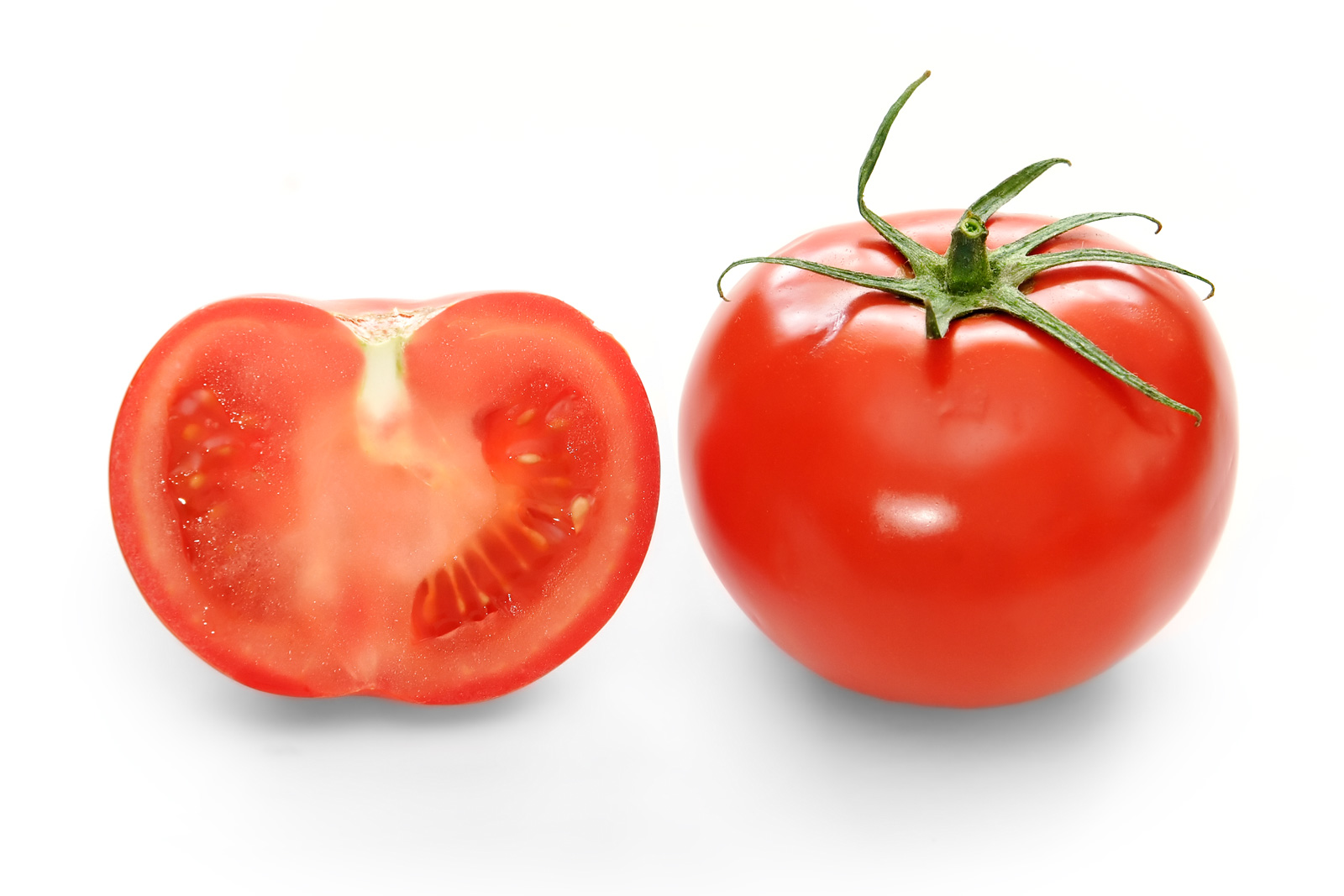
History
The tomato is native to South America. Genetic evidence shows that the progenitors of tomatoes were herbaceous green plants with small green fruit with a center of diversity in the highlands of Peru. One species, Solanum lycopersicum, was transported to Mexico where it was grown and consumed by prehistoric humans. The exact date of domestication is not known. The first domesticated tomato may have been a little yellow fruit, similar in size to Cherry tomatoes, grown by the Aztecs of Central Mexico. Aztec writings mention tomatoes were prepared with peppers, corn and salt. The word tomato comes from the Aztec tomatl.
Many historians believe that the Spanish explorer Cortez may have been the first to transfer the small yellow tomato to Europe after he captured the Aztec city of Tenochtítlan, now Mexico City, in 1521. Others believe Christopher Columbus, an Italian working for the Spanish monarchy, was the first European to take back the tomato, as early as 1493. The earliest discussion of the tomato in European literature appeared in a herbal written in 1544 by Pietro Andrea Mattioli, an Italian physician and botanist, who named it pomo d’oro, golden apple.
Aztecs and other peoples in the region used the fruit in their cooking; it was being cultivated in southern Mexico and probably other areas by 500 BC. It is thought that the Pueblo people believed that those who witnessed the ingestion of tomato seeds were blessed with powers of divination.[5] The large, lumpy tomato, a mutation from a smoother, smaller fruit, originated in Mesoamerica, and may be direct ancestor of some modern cultivated tomatoes.[4]
Spanish distribution
After the Spanish colonization of the Americas, the Spanish distributed the tomato throughout their colonies in the Caribbean. They also took it to the Philippines, from where it spread to southeast Asia and then the entire Asian continent. The Spanish also brought the tomato to Europe. It grew easily in Mediterranean climates, and cultivation began in the 1540s. It was probably eaten shortly after it was introduced, and was certainly being used as food by the early 1600s in Spain. The earliest discovered cookbook with tomato recipes was published in Naples in 1692, though the author had apparently obtained these recipes from Spanish sources[citation needed]. However, in certain areas of Italy, such as Florence, the fruit was used solely as tabletop decoration before it was incorporated into the local cuisine in the late 17th or early 18th century.
The tomato is the world's most popular fruit. And yes, just like the brinjal and the pumpkin, botanically speaking it is a fruit, not a vegetable. More than 60 million tons of tomatoes are produced per year, 16 million tons more than the second most popular fruit, the banana. Ap...ples are the third most popular (36 million tons), then oranges (34 million tons) and watermelons (22 million tons).
Tomatoes were first cultivated in 700 AD by Aztecs and Incas. Explorers returning from Mexico introduced the tomato into Europe, where it was first mentioned in 1556. The French called it "the apple of love," the Germans "the apple of paradise."
Tomatoes are rich in vitamins A and C and fibre, and are cholesterol free. An average size tomato (148 gram, or 5 oz) boasts only 35 calories. Furthermore, new medical research suggests that the consumption of lycopene - the stuff that makes tomatoes red - may prevent cancer. Lycopene is part of the family of pigments called carotenoids, which are natural compounds that create the colours of fruits and vegetables. For example, beta carotene is the orange pigment in carrots. As with essential amino acids, they are not produced by the human body. Lycopene us the most powerful antioxidant in the carotenoid family and, with vitamins C and E, protect us from the free radicals that degrade many parts of the body. The scientific term for the common tomato is lycopersicon lycopersicum, which mean "wolf peach." It is a cousin of the eggplant, red pepper, ground cherry, potato, and the highly toxic belladonna, also known as the nightshade or solanaccae. There are more than 10,000 varieties of tomatoes. Tomatoes are used in many food product, including, of course, tomato sauce (ketchup), pasta and pizza.
According to a Steel Packing Council survey of 1997, 68% of chefs use canned tomatoes for convenience, quality and flavouring. It hasn't changed much since. Tomatoes - world's most popular fruit.A fruit is the edible part of the plant that contains the seeds, while a vegetable is the edible stems, leaves, and roots of the plant.Cooked tomatoes have higher concentrations of lycopene than non-cooked tomatoes.Don't store ripe tomatoes in the fridge. Cold temperatures lessen the flavour in tomatoes.
Tomatoes Fast Facts:
The scientific term for the common tomato is lycopersicon lycopersicum, which means "wolf peach."
There are more than 10,000 varieties of tomatoes.
Botanically speaking, the banana is a herb and the tomato is a fruit.
Bananas are the world's most popular fruit after tomatoes. In western countries, they could account for 3% of a grocer's total sales.
Watermelons are 97% water, lettuce 97%, tomatoes 95%, carrots 90%, and bread 30%.
source; Wikipedia
http://www.didyouknow.cd/fastfacts/food.htm & tomato.org
No comments:
Post a Comment